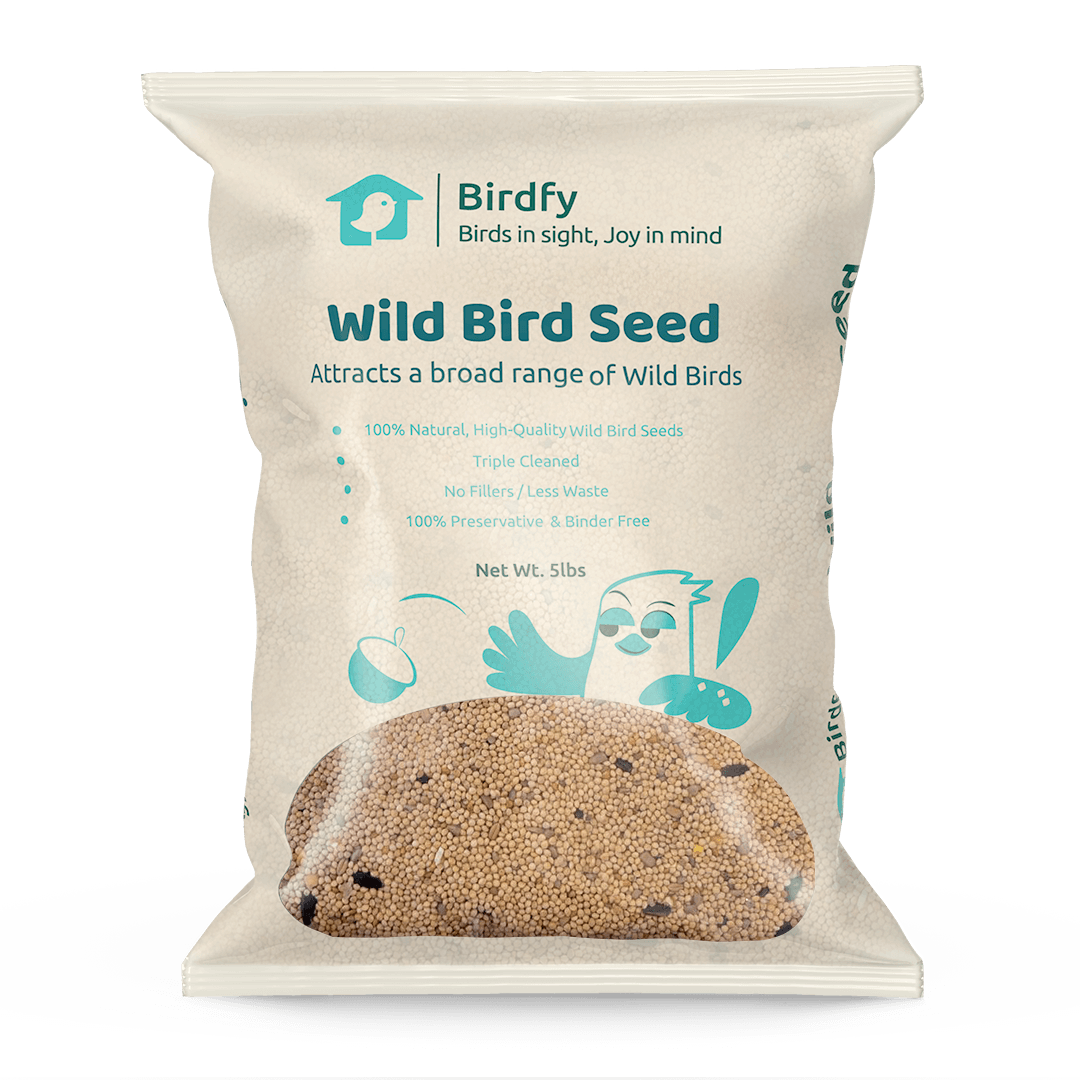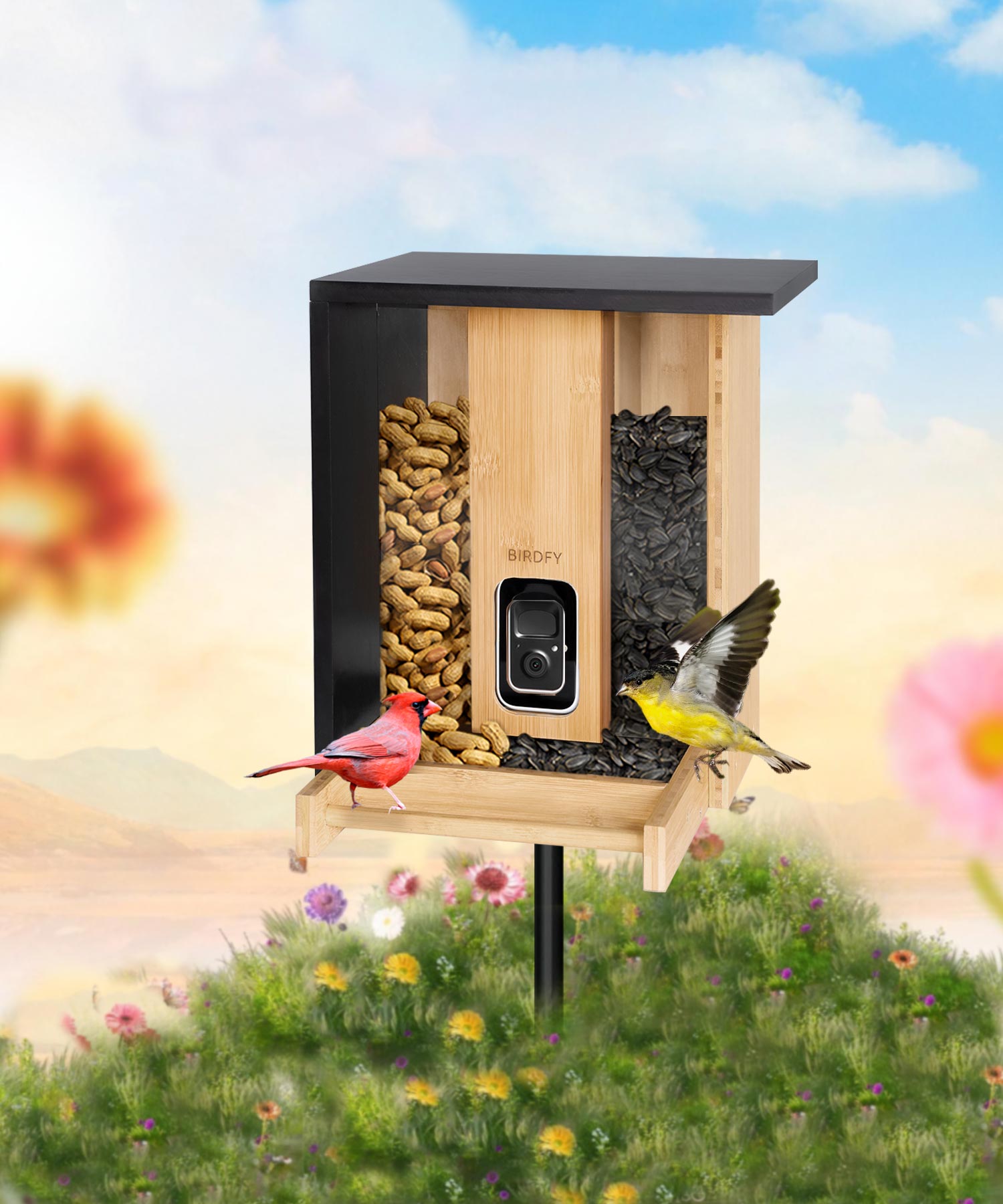A Guide To 30 Yellow Birds In The World
Yellow birds, distinguished by their distinctive plumage and varied habitats, are among the avian world's most colorful and visually arresting species. These birds, which may be found in tropical rainforests and temperate woodlands, captivate birdwatchers and environment lovers with their golden colors.
This article highlights the distinctive characteristics, habitats, and behaviors of thirty stunning yellow birds worldwide. This list offers fascinating insights into yellow birds, highlighting their diversity and ecological functions in various locations, whether you're a birding lover or just interested in learning more about these colorful species.
Introduction
The Significance Of Yellow Birds In Nature
The yellow bird serves to manifest the fantasy of people who see it. Their vibrant color and symbolic meanings extend beyond mere aesthetics, often representing happiness and joy in various cultures. Besides their appearance, their bright color includes the definition of energy for the associated values. From songbirds to big parrots, these birds have learned to adapt perfectly to different kinds of environments, from forests and wetlands to grasslands.
Overview Of Yellow Bird Species
Yellow bird species can be found across various habitats globally, showcasing different behaviors and adaptations in various settings, including temperate grasslands, marshes, and tropical rainforests. These colorful birds display diverse behaviors and environmental adaptations, including breeding habits, migration patterns, and unique eating tactics.
While some only consume fruit, others also consume nectar or insects. Their distinctive yellow plumage is sometimes used for camouflage, territorial defense, and mating displays within their particular ecological niches.
Yellow Birds Of North America
Yellow birds populate all of North America. They add sunlight to all the places, from forests to grasslands to cities. Most birds migrate and travel long distances to breed and look for food. A few of the yellow birds most common in North America include:
American Goldfinch
Brief Description: Bright yellow males have black wings and a distinctive cap during the breeding season.
Habitat: These birds' habitats include open fields, roadsides, and meadows. They prefer areas with shrubs and grasses.
Feeding Habits: Goldfinches are seed-eaters and usually favor thistles and sunflowers.
Yellow Warbler
Brief Description: This small gay bird is bright yellow. The underside of the chest is usually reddish, like streaks, especially among males.
Habitat: Yellow warblers are normally found in wetlands, open woodlands, and shrublands, especially near water.
Feeding Habits: They are insectivorous, feeding on all kinds of insects, such as caterpillars, flies, and beetles, which they usually forage from branches.

Prothonotary Warbler
Brief Description: The Prothonotary Warbler is a beautiful species found in eastern North America. Its striking golden-yellow color, supported by blue-gray wings and tail, makes It a striking bird.
Habitat: Swamps, flooded forests, and wetlands with standing water are the species' preferred habitats.
Feeding Habits: This bird mainly eats insects, which consist of spiders, beetles, snails, and many more mollusks that reside in its wet habitat area.

Yellow-Headed Blackbird
Brief Description: The Yellow-Headed Blackbird is a theatrical appearance with its striking yellow head and body of black, mostly in western North America.
Habitat: They are fond of marshes, wetlands, and agricultural fields.
Feeding Habits: They consume insects in summer but switch to seeds and grains, primarily from crops, when autumn turns into winter.

Common Yellowthroat
Brief Description: This is a small warbler with a bright yellow underside and a black mask over its face.
Habitat: Dense undergrowth, marshy places, and wetlands are their preference.
Feeding Habits: Yellowthroats eat insects and spiders, searching on or near the ground or water.
Western Tanager
Brief Description: Males of this species are easily identified by their bright yellow bodies, contrasting with a red-orange head and black wings.
Habitat: They inhabit open coniferous forests and woodlands in the western regions.
Feeding Habits: Western Tanagers feed on insects, fruit, and berries, often catching flying insects mid-air.

Yellow-Breasted Chat
Brief Description: The Yellow-Breasted Chat is a large, robust warbler with a bright yellow chest and olive-green upperparts.
Habitat: It occurs in dense, shrubby thickets, especially along rivers.
Feeding Habits: The diet includes insects, berries, and small fruits.

Lesser Goldfinch
Brief Description: The Lesser Goldfinch is a small, bright yellow bird with black or dark green on its back. It is mostly found in the western United States.
Habitat: It prefers open woodlands, scrublands, and river habitats.
Feeding Habits: They mostly consume sunflower seeds and are often seen feeding in large flocks.

Yellow Birds Of Central And South America
Yellow birds prosper in vast differences in the tropical and subtropical landscapes of Central and South America, ranging from the tiny hummingbird to the large parrot. The varied riches of rainforests, mountains, and grasslands provide adequate food sources for the yellow birds.
Saffron Finch
Brief Description: The Saffron Finch is a small, bright yellow bird with an orange-tinted head. It is frequently seen in open fields and gardens.
Habitat occurs in savannas, grasslands, and human-modified habitats like parks and gardens.
Feeding Habits: This bird mainly eats seeds, small insects, and berries.

Yellow-Rumped Cacique
Brief Description: This striking bird has a black body and bright yellow rump, tail, and wing patches. It is social and spends much time in large colonies.
Habitat: Tropical lowland forests and wetlands
Feeding Habits: They feed on fruits, insects, and nectar.

Yellow Oriole
Brief Description: It has a bright yellow plumage, black wings, and a tail. It is found in pairs or groups of up to six.
Habitat: Dry forests, savannas, and mangroves in Central America and northern South America.
Feeding Habits: It eats different fruits, nectar, and insects.
Yellow-Fronted Woodpecker
Brief Description: This brightly colored woodpecker is present with a bright yellow belly and forehead. The head carries a red crown, and the back is black.
Habitat: Tropical and subtropical forests of South America.
Feeding Habits: The principal feeds on insects, although it does feed on fruits.

Golden-Headed Manakin
Brief Description: This bird is rather small and ball-shaped. Its head is metallic golden-yellow, and its body is black. It is famous for grand courtship displays.
Habitat: The bird stays in lowland rainforests, particularly in the densely overshadowed parts.
Feeding Habits: It feeds mainly on fruits and insects.

Yellow-Tufted Honeyeater
Brief Description: A large bird with yellow feathers tufted near its ear holes and is yellow-olive green overall.
Habitat: Inhabits eucalyptus forests and woodlands of the tropical and subtropical regions.
Feeding Habits: Nectar, insects, and sometimes fruits are eaten.

Golden Tanager
Brief Description: The golden tanager is a beautiful bird. It is bright yellow with black markings and often lives in Andean cloud forests.
Habitat: They mainly prefer montane forests. They can usually be found at high elevations.
Feeding Habits: They mainly eat fruits, berries, and small insects.

Yellow-Bellied Elaenia
Brief Description: The yellow-bellied elaenia is a small flycatcher with an olive-green back and yellow belly. It is agile and energetic.
Habitat: Found in open woodlands, gardens, and scrublands.
Feeding Habits: It consumes small insects, fruits, and seeds.

Yellow-Billed Cacique
Brief Description: This bird species is mostly black but has a bright yellow bill. It is very social and cooperative in its nestings.
Habitat: It inhabits the tropical forests and wetlands of Central as well as South America
Feeding Habits: It takes a diet of fruits, nectar, and insects.

Yellow Birds Of Europe And Asia
Although not as widespread as in the Americas, many species of yellow birds still exist in Europe and Asia, staining the meadows, wetlands, and forests with a beautiful splash of color.
Eurasian Golden Oriole
Brief Description: The Eurasian Golden Oriole is a brightly yellow-colored bird with black wings and a bright red beak whose song is sweet to listen to.
Habitat: It is found in woodland, orchards, and forests, mostly in south Europe and parts of Asia.
Feeding Habits: It eats fruits, insects, and small vertebrates, including frogs and lizards.
Grey Wagtail
Brief Description: The Grey Wagtail is a narrow bird with a yellow belly and a relatively long tail. It is mostly found hanging out near water bodies.
Habitat: Waterside rivers, lakeshores and wetlands
Feeding Habits: It eats water bugs, crustaceans, and different types of spiders

Citrine Wagtail
Brief Description: This wagtail is colorful, yellow, and gray and is commonly found in wetland environments.
Habitat: Open grasslands, marshes, and wet meadows of Central Asia
Feeding Habits: Eats small insects and aquatic invertebrates

Black-Naped Oriole
Brief Description: Medium-sized bird with a striking orange body, black nape, and red eyes. Originally from Asia.
Habitat: Its habitat is forests, gardens, and urban parks.
Feeding Habits: It eats fruits, berries, and insects.

Yellow-Breasted Bunting
Brief Description: This is a brightly colored migratory species with bright yellow breast and brownish body.
Habitat: Grasslands, marshes, and agricultural fields.
Feeding Habits: Seeds, grains, and small insects.

Yellow-Throated Bulbul
Brief Description: This bird is native to India and has an olive-green body, bright yellow throat, and underparts.
Habitat: Scrub forests and open woodlands.
Feeding Habits: Fruits, nectar, and small insects.

Yellow-Headed Wagtail
Brief Description: A small, active bird with a yellow crown and olive-green upper parts, typically inhabiting wet meadows.
Habitat: Wet grasslands, marshes, and tilled fields.
Feeding Habits: Eats insects primarily when it's migrating.

Grey-Crowned Yellowthroat
Brief Description: A tiny yellow bird with a gray crown and black mask is distributed throughout Asia.
Habitat: Saves habitats in dense undergrowth near wetlands and grasslands.
Feeding Habits: It feeds on insects, seeds, and other small invertebrates.

Yellow Birds Of Islands And Lesser-Known Species
Some little-known yellow birds nest in the islands and distant areas, most of which are only found in certain zones. Such species, naturally, will have some adaptations to their island environment.
Yellow Canary
Brief Description: The Yellow Canary is a tiny, highly yellow bird in the African islands and southern Africa.
Habitat: They are preferably seen in open savannas, gardens, and coastal regions.
Feeding Habits: Eats mainly on seeds, especially grasses and sometimes insects.

Yellow-Fronted Canary
Brief Description: Small-sized bird with a yellow face and belly. Generally found in Madagascar and its neighbors.
Habitat: Roam in forests, gardens, and agricultural lands.
Feeding Habits: Feed on seeds, berries, and small insects.

Yellow-Bellied Sunbird
Brief Description: This sunbird boasts a bright yellow belly and metallic green color on the upper parts. It is also an inhabitant of some island nations such as Sri Lanka and the Philippines.
Habitat: Needs tropical rainforests and coastal forests.
Feeding Habits: Nectar, insects, and spiders.

Yellow-Tufted Honeyeater (Island Variant)
Brief Description: This island variant of the Yellow-Tufted Honeyeater is smaller and more colorful.
Habitat: Locally in Pacific islands.
Feeding Habits: Eats nectar, fruits, and insects.

Yellow Cardinal
Brief Description: A rare bird with bright plumage and marks on the face black in a yellow hue from Argentina and parts of Brazil.
Habitat: Open woodlands and savannas.
Feeding Habits: Seeds, grains, and small insects consumption.

Conclusion
Yellow birds bring life to any ecosystem worldwide due to their beautiful color and different habitats. If it is the American Goldfinch of North America or the Yellow Cardinal of South America, which is quite rare, each of these birds has different adaptations and jobs in its environment. From eating seeds and insects to dominating forests, wetlands, and now even urban centers, those bright yellow feathers play a critical role in the survival of those birds while adding sparkle and beauty to the natural environment. Further study of these species will allow us to appreciate their importance in the natural world and the ecosystems they enrich.
Share
































